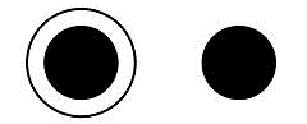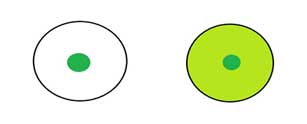
It’s that time. You’ve grown tired of looking at your old, chipped plates, and people are starting to talk. It’s time for new tableware. In addition to the shape of the dishes, one of the most asked questions is, “What color of dishes should I buy for everyday meals?” Should they match the tablecloth, or the decor? You may even decide to go to the local Wal-mart, K-mart, or other local store and see what’s available.
As you browse down the tableware aisle, you may be awestruck at the colors and styles available. There are oval plates, round plates, and even square ones. And they come in every color, and combination of colors in the rainbow.
So what’s the big deal? As long as they look nice, does it really matter? The answer may surprise you. Believe it or not, the color of your dishes, as well as the shape and the size have a huge impact on how you eat, as does the tablecloth, and decor. Restaurateurs and chefs have known about this for a long time, but they would prefer that the general public not be aware of it. If you haven’t guessed, yet, I’m about to let a very large cat out of the bag.
Look at the two circles and decide which is bigger:

It’s the one on the left, isn’t it? ……Wrong! Both circles are exactly the same size. What you have just experienced is an anomaly known as the Delboeuf Illusion. It was named after the Belgian scientist that discovered the phenomenon in 1865, Joseph Remi Leopold Delboeuf (they liked long names back then….) It was found that a circle with a concentric circle on the outside would appear larger than one without the outside circle. It is an optical illusion. It wasn’t long before the restaurant business took notice, and began having plates designed with thin rims to make them appear larger. It allowed the restaurants to serve smaller portions without the patrons thinking they were getting less value for their money. Now you know why standard modern plates are made the way they are.
The Delboeuf Illusion also works with color contrasts. A new study done by Brian Wansink and Koert Van Ittersum has proved that food portions on a contrasting colored plate appear larger than on one with less contrast. (Ittersum and Wansink: Delboeuf’s Illusions Bias on Serving and Eating Behavior, Journal of Consumer Research, Vol 39, No. 2, August 2012). To illustrate the principle, look at the two ‘plates’ in the drawing below:

Even though the green dot on the left appears larger, both circles, and both green dots are exactly the same size.
This has some intriguing possibilities, when you think about it. A person might be able to eat less, and lose weight just by changing the color of their plates. Prof. Wansink, who is the former Executive Director of the USDA’s Center for Nutritional Policy and Promotion, went a step further with his experiment. They set up two buffets with pasta., and a choice of either marinara (red), or Alfredo sauce (sort of white…ish) One group was given contrasting plates, while the other was given plates that closely matched the color of the food. Persons serving themselves with a low contrasting combination (ie: marinara on a red plate, or Alfredo on a white plate) served themselves a whopping 22% more food. Think of what that could add up to, over time…….
The study also found that reducing the contrast of the tablecloths and tableware caused people to consume as much as 10% less food….good news for people who want to trim down.
The study found that even the size of the plates had a dramatic effect on how much people ate. Smaller plates cause people to eat smaller portions, as much as 20% less, even though the portions appear larger. The results of these tests should go a long way towards helping you answer the question, “What color plates should I buy for everyday meals?”
A lot may depend both on your desires, and what types of food you cook most often. Do you want to eat more green vegetables (or get someone else to)? Try serving them on a larger-sized green plate. To lose weight, you could try going to smaller-sized plates, and use contrasting colors to the food you are serving. And don’t forget, this works with drinks, too. The study found that people poured 28% more liquid into a short wide glass, than a tall one. Of course, if you want to gain weight, then just do the opposite.
The obvious conclusion is to have several different-sized plates, in several colors. I’d recommend a selection in green, red, yellow, white, and maybe brown (for fried foods). Have a good assortment of 9″ and 12″ plates handy. And, if you buy anything Low Fat, remove the labels. Knowing something is Low Fat caused people to consume 16%-23% more calories. Great study, huh????
By making judicious use of the information gained through this study, you’ll never again have to wonder, “What color plates should I buy for everyday meals?
